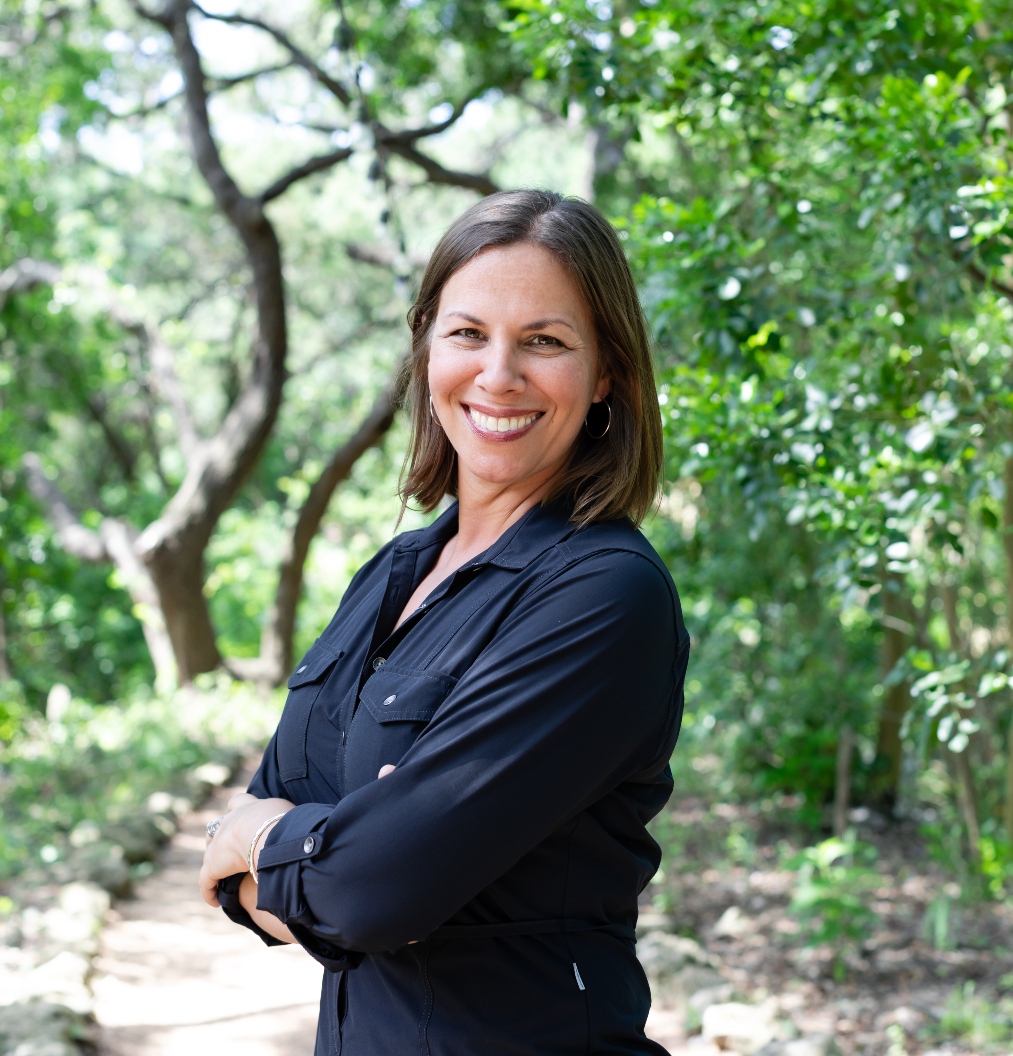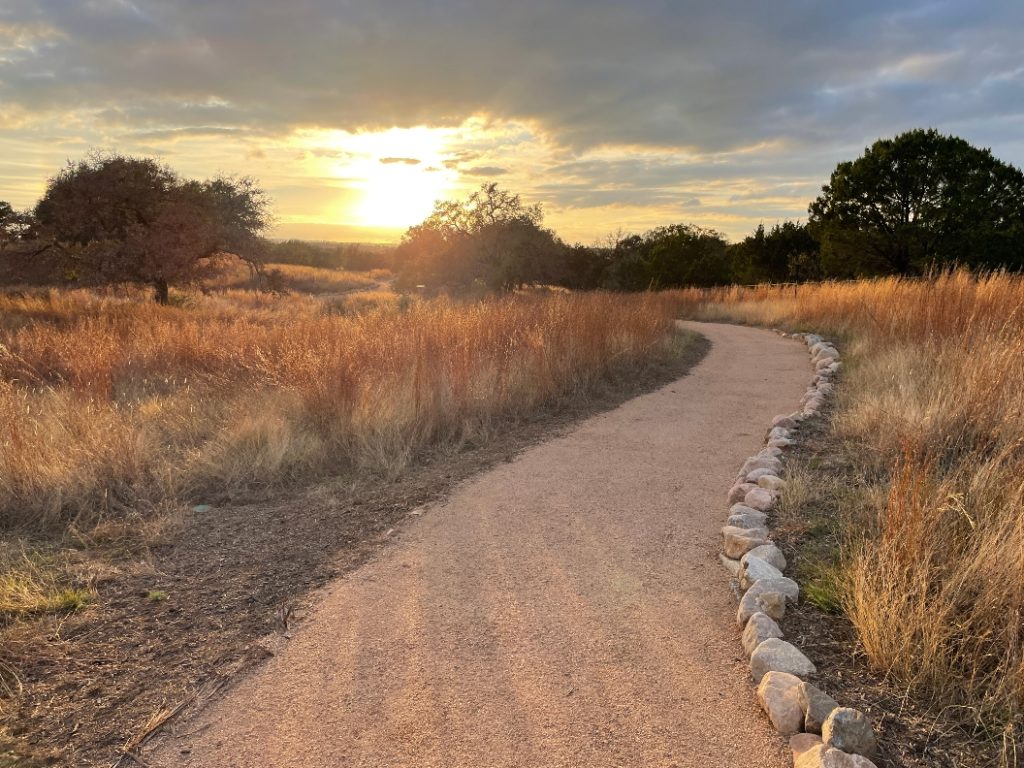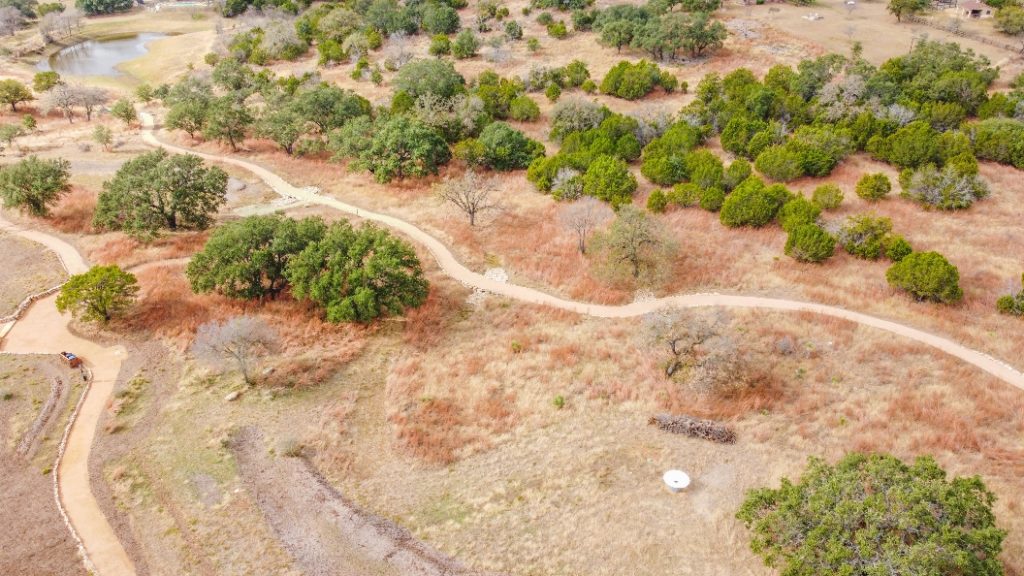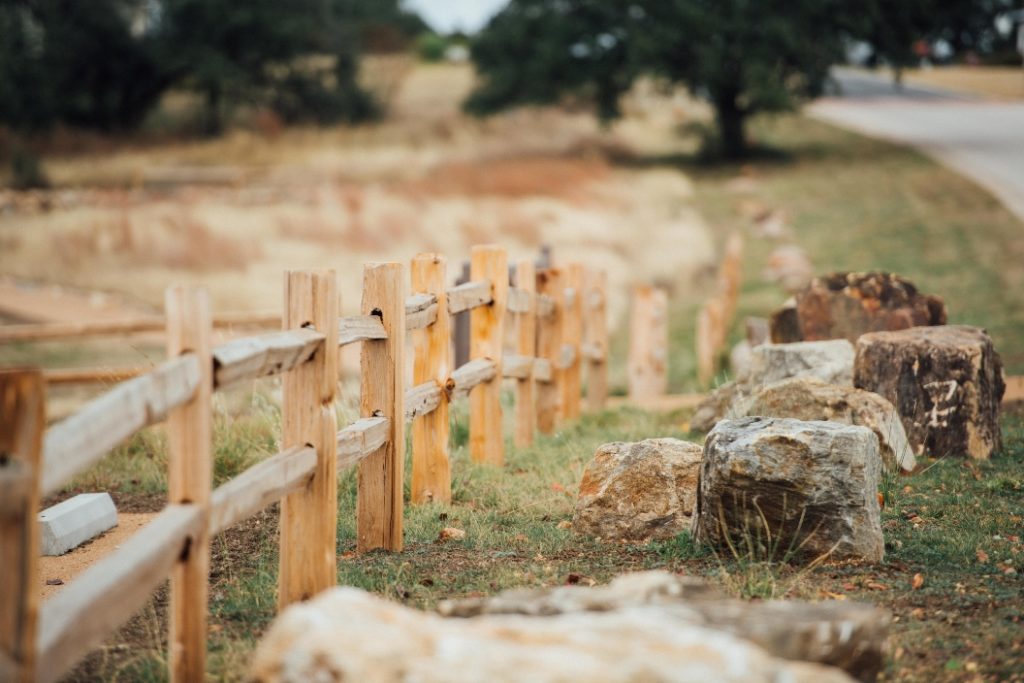Twistleaf celebrates the native ecological landscape of the Texas Hill Country

By Jess Bugg
Horseshoe Bay Nature Park features 11 acres of newly restored land and a half-mile walking trail through eight distinct ecological zones. Located just southwest of Marble Falls, about an hour drive from downtown Austin, the park opened to the public in January.
Creating Horseshoe Bay Nature Park
In 2020, Sarah Yant founded Twistleaf, a Texas-based landscape design-and-build. It is a culmination of Yant’s 15 years in the industry and marks a shift toward more sustainable and restorative projects. “I still use the word ‘landscaping’ because people understand it, but I don’t really like the concept,” she admits. “You can create a beautiful space using non-native plants, but it can be lifeless at the same time. It’s important to learn about the place you live and appreciate the land. We look at each property, big or small, in a very holistic way.” Ecological planner Elizabeth McGreevy spent about a year creating the conceptual design for Horseshoe Bay Nature Park. Twistleaf brought her design development and construction plans to fruition.

Horseshoe Bay Park, Photo by Sarah Yant 
Photo by BorjaVisuals 
Horseshoe Bay Park, Photo by Borja Visuals
An Ecological Education
Each of the eight distinct ecological zones of the park support hundreds of native species of flora and fauna. A bird blind also overlooks a neighboring pond and provides an excellent opportunity for viewing wildlife as well as nature photography. Visitors can also expect to see dozens of wildflower species in bloom throughout the year as well as native trees. They not only improve air and water quality; they also provide food and shelter for wildlife.
“Ashe juniper is a really important part of our ecosystem,” says Yant. “It’s one of our most important evergreen trees and birds love it. They like it when branches go all the way to the ground.” Austinites tend to have a love-hate relationship to Ashe juniper (the tree behind cedar fever). But Yant hopes people will recognize the good in this evergreen tree and stop removing it. “Maintaining the cover and trees you have is an element of land management and education we are trying to advocate for. Ashe junipers are amazing trees. Especially when they are allowed to grow old and big. They are also incredibly important for erosion as well. I think it’s an inappropriately maligned tree, and I have terrible cedar allergies so I understand.”
Yant hopes the park’s website will serve as an educational tool to help visitors learn about the land and navigate the space. Especially kids, who have a designated section devoted to scavenger hunts, birding and other activities to use when visiting the park. While it is still in the first phase, future phases include interpretive signage that will offer information about various flora and fauna. The information will also bring attention to the land’s history where Comanche and Tonkawa tribes once resided.
“I’ve lived in places where everyone sprayed herbicides in their yard and there were no bees or butterflies. At Twistleaf we think about the soil health, wildlife habitat, beauty, how people and pets will. I think that’s one of the biggest things people miss when they hear the word landscape; the interconnectedness of life.”
Nurturing the Ecosystem in Your Backyard
The name Twistleaf comes from the twistleaf yucca, a Texas Hill Country native and a favorite of Yant’s. Aside from twistleaf, Yant has a few other plants she finds herself returning to both in her own garden as well as in her clients’. “I’m really in love with plants that bloom in the fall after we’ve made it through the heat of summer. It’s such a nice breath of fresh of air. Fragrant mistflower is a fall blooming perennial you see tumbling down limestone cliffs in the hill country; it’s a big butterfly magnet. Another plant I really love and I think is underutilized is a native evergreen grass called basket grass. It’s similar to twistleaf but has a thinner blade and is droopier. It’s also extremely drought tolerant and low maintenance.”
For those new to gardening and landscaping, Yant recommends learning about native plants and plants that have adapted to the conditions. She understands the need for lawns when it comes to kids and dogs. But she emphasizes, “small lawns that make sense” rather than big expanses of manicured grass. Trends such as xeriscaping are probably best reserved for West Texas, Arizona and New Mexico. Places that don’t get as much rain as Central Texas. “Rock doesn’t do anything for the soil health,” she says. “But mulch is one of the most amazing things you can use in your garden, because there’s a relationship. When the mulch breaks down it feeds the soil and it conserves moisture.”
Sarah Yant: Book Recommendations
Here are four of Yant’s favorite books she recommends to experts and novices alike.
Trees, Shrubs, and Vines of the Texas Hill Country by Jan Wrede: “A great resource for learning about native plants.”
Plant-Driven Design by Scott Ogden and Lauren Springer Ogden: “This one is about creating a sense of place through design.”
Wildflowers of the Texas Hill Country by Marshall Enquist: “There are so many books about Texas wildflowers and even Hill Country wildflowers. But it’s one I always come back to even though it’s 30 years old now; it’s a really thorough guide.
Native Texas Plants: Landscaping Region by Region by Sally Wasowski and Andy Wasowski: “They have written several books and were some of the first people to write about native plants and their use and how to actually implement them in landscape design.”
Wanted! Mountain Cedars: Dead and Alive by Elizabeth McGreevy by Elizabeth McGreevy: “A book on Ashe juniper.”








